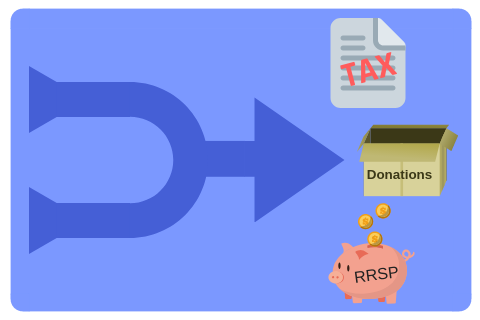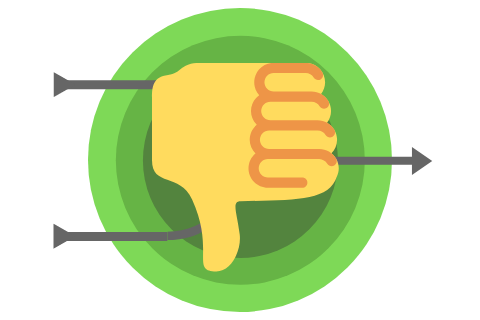Table of contents
You might have heard that life insurance can cover more than one life.
One of these types, joint first-to-die life insurance, pays out on the first death of two people.
The other is joint last-to-die life insurance coverage, also called second to die life insurance.
As you can probably guess by its name, nothing happens on the first death. Instead, the insurance company pays out the death benefit when the surviving partner on the policy passes away.
In this post, we will explore the advantages and drawbacks of joint last-to-die life insurance policies and whether you should use it.
- Key takeaways:
- Joint last-to-die life insurance is a type of permanent life insurance coverage between two or more people that pays a death benefit after the last insured dies.
- Among other uses, joint last-to-die life insurance can help cover final taxes and fund charitable donations.
- A joint last-to-die policy is more affordable than a single life policy. However, joint life insurance policies tend to offer less flexibility than single life policies.

What Is Joint Last-To-Die Coverage Used For?

Paying final taxes
The primary use of joint last-to-die life insurance is for paying final tax liabilities. When you pass away in Canada, your capital property are deemed to be sold for fair market value immediately prior to your death.
In plain English? This means you’ll trigger a capital gain for investments that have gone up in value. Although there are no estate taxes in Canada, the tax treatment of capital property means your heirs won’t receive your entire estate tax-free.
Most capital gains are in the form or either a non-registered investment portfolio or rental properties. 50% of the first $250,000 of capital gains are added to your income and taxed at your marginal tax rate. For capital gains above $250,000, the inclusion rate increases to 66.67%.
But that’s not all. You also have to include your RRSP or RRIF in your income.
This will result in an enormous tax bill for many people who have large capital gains and a significant amount saved up in their registered accounts. In fact, for most people, their final tax bill will be by far the highest in their lives.
Here’s an example of the size of the tax bill you might face:
- A couple purchased a rental property outside the city for $100,000 over 20 years ago.
- The property is currently valued at $500,000, so the unrealized capital gain is $400,000.
- They also have a combined $500,000 in their RRIF.
- If they both pass away, 50% of the gain below $250,000 plus two-thirds above $250,000, or $225,000, will be taxable.
- Add that to their RRIF, and $725,000 will be added to their income.
- At the highest marginal tax rate of 50%, this will result in a tax bill of $362,500!
On top of the final tax, there’s also probate fees, executor fees, legal and accounting fees, and funeral expenses to consider. Add up these other expenses and the legacy that they leave their children can shrink by up to 50%!
Fortunately, to relieve the tax liability, there are exceptions to the capital gains rule:
1. You’re exempt from paying tax on the capital gain of your principal residence if it’s been your principal residence the entire time you owned it.
2. If you own shares of a Qualified Small Business Corporation, you can claim an exemption on the gain up to $1,250,000. This amount is as of June 25, 2024 and will be indexed to inflation.
3. If you own shares of a Qualified Farm or Fishing Properties, you can also claim an exemption on the gain up to $1,250,000.
4. If your spouse outlives you, you can transfer your property to him/her tax-free. This is known as the spousal rollover.
The good thing is, #4 also applies to assets within your RRSP and RRIF. This means the tax bill is actually delayed until the surviving spouse passes away too.
That’s why joint last-to-die coverage works so well for paying off your final tax liabilities. It’s designed to pay out a tax-free death benefit upon the death of the surviving spouse. To determine how much life insurance you need, you should match the insurance benefits on the permanent life insurance policy to the estimated tax bill so that it offsets the tax completely.
You worked hard to build up your assets and you don’t want them eroded by tax before passing to your beneficiaries. Having second-to-die life insurance coverage ensures that you leave your entire estate to your children, not the government.
Property tax deferral
In BC, if you are 55 or older and you are a homeowner, you can defer your property tax indefinitely.
You’re charged a simple interest rate of 5.2% (as of 2024). The fact that it doesn’t compound saves you a lot of interest and is a huge benefit to you.
This presents an opportunity with joint last-to-die life insurance.
You can use the money saved to buy a second-to-die policy so that upon the second death, your estate can use the death benefit to pay off the tax bill. The advantage is that the insurance benefits exceed the tax liability so your estate will still have money left over to pass to your beneficiaries.
For example, let’s assume your property taxes this year is $5,766. You can buy a joint last-to-die policy for a 55-year-old couple for $500,000 of death benefit.
The life expectancy for the male is 82.8 and the female is 86, so you will pay premiums for 31 years.
That’s $318,473 in total owing from the deferred property tax and interest at age 86 (based on 3% annual increase in property value).
That means your beneficiaries will get $181,527 after you pay off the debt.
Not too shabby.
Taking care of a permanently disabled sibling
Joint last-to-die life insurance policies aren’t just for retired spouses.
If you and your sibling(s) have another brother or sister that is permanently disabled, you might need some insurance coverage to make sure there will be money to take care of him/her if you and your other siblings pass away prematurely.
The death benefit is only needed when there’s nobody around to take care of the disabled sibling, so joint last-to-die coverage is perfect for this situation.
And a joint last-to-die life insurance policy can cover more than two lives, so it’s suitable even if you have many siblings.
- Pro tip:
- To preserve the disabled individual's rights to collect asset- or income-tested government benefits, the death benefit should be paid into a fully discretionary trust, also known as a Henson trust.
Charitable donation and creating a legacy
Do you have a charity that you and your partner care deeply about?
If you’d like to make a large donation to the charity but don’t have the cash, you can name it as the beneficiary of a joint last-to-die life insurance policy.
Upon the second death of you and your spouse, the death benefit will go to the charity. In return, the estate of the surviving partner will get a tax receipt from the charity.
So you get to accomplish two goals at once: make a charitable donation and lower your taxes.
It doesn’t just apply to charities either. You could also use joint last-to-die life insurance policy to create a legacy to leave to your children and/or grandchildren.
Although you won’t get a tax receipt, it’s the perfect way to leave an inheritance for the next generation.
Insured annuity
An insured annuity is a strategy using two products: a life insurance policy and an annuity.
As you know, a life insurance policy pays out a lump sum amount at death in exchange for a stream of premium payments to the insurance company.
You can think of an annuity as the reverse: you pay the insurance company a lump sum amount in exchange for a stream of income payments until you die.
The goal of the insured annuity strategy is to increase your retirement income while also leaving an inheritance for your beneficiaries.
And it does exactly that. The annuity accomplishes the former while the joint life insurance policy takes care of the latter.
Compared to a conservative investment that is typical of a retirement portfolio, the annuity can more than double your after-tax income!
Advantages Of Joint Last-To-Die Life Insurance Coverage

Lower premiums
One of the main advantages of joint last-to-die life insurance policies is the lower premium.
For example, a 65-year-old male non-smoker will have to pay $1,282/month for $500,000 of death benefit for an individual policy. Instead, if he bought a joint last-to-die policy with his wife, who is also 65, they would only pay $803/month.
He would have saved 37% on the monthly cost!
But why do joint last-to-die life insurance policies have lower premiums compared to individual policies?
Because, with single life coverage, the insurance company must pay out immediately after the covered person dies. Whereas with joint policies, they pay only after the second death.
It’s likely one of them will survive until old age, so this is priced into the insurance. That’s why a joint last-to-die policy is cheaper than a single policy.
- Quick tip:
- By the way, you can't quote for joint last-to-die life insurance using any quotation tool online. If you want to find out which insurance company provides the best deal, fill out the form on this page.
Increasing death benefit option
The value of your assets aren’t static. It will continue to increase in value until the day you pass away.
For your investments and rental properties, that means that your potential capital gain and corresponding tax liabilities will also continue to increase.
Same as your RRSP/RRIF, although the increase is partially offset by mandatory withdrawals in your RRIF starting at age 71.
To account for the increasing tax liability, you can buy a joint life policy that has an increasing death benefit (e.g. a whole life or universal life insurance policy). Besides an increasing death benefit, it also has an increasing cash value that you can withdraw at any time.
Flexibility with pay until first death
With this option, the premiums are only paid until the first death. After that, the joint last-to-die policy is fully paid-up and you don’t need to continue paying premiums anymore.
- Insurance term explained:
- A paid-up policy means that the policy is in force without any further premiums. It will only be cancelled if you surrender it for the cash value.
Why is this beneficial?
Imagine if you’ve done some estate planning and have the joint last-to-die life insurance policy to pay off final taxes.
But after you pass away, your children—who don’t understand the value of the joint life insurance policy as part of your estate plan—urges your spouse to cancel it.
Maybe your spouse wasn’t involved in the planning process, and doesn’t understand the importance of the policy. Or maybe your spouse is beginning to become forgetful or showing signs of dementia.
Either way, your efforts in estate planning would have worked, if it weren’t for those meddling kids.

Another situation where this might happen is if the retirement income of the surviving spouse will drop once the spouse passes away. Income might need to be diverted to more immediate needs and so the joint life policy is cancelled.
A policy fully paid up on the first death prevents either situation from happening.
But pay until first death doesn’t come without a cost. Using the same couple from above, the premium is $1,070/month for a joint life policy payable until the first death. This is 33% more than the payable until last death option.
The increase is due to the fact the insurance company won’t collect premium for as long, so it has to charge higher premiums.
Drawbacks Of Joint-Last-To-Die Life Insurance Policies

Health issues
The older you are, the more likely you will have chronic health issues. This makes it harder to qualify for life insurance at standard rates.
And if the policy is rated, you’ll have to seriously consider if it is still worth it.
Let’s revisit the example of the 65-year-old couple, who can buy a joint last-to-die insurance policy for $803/month. If the policy is rated 100% because of poor health of one of the spouses, the premium jumps to $1,445/month, an increase of 80%!
Instead of buying joint coverage, it might be more affordable to place the coverage on the healthier spouse.
Here’s how much it will cost if the wife was healthier and bought a policy at standard rates: $1,136/month.
Lack of flexibility
Some insurance companies don’t let you split your joint last-to-die insurance policy into two separate policies.
Why do you need to split the joint policy?
Because things change, and the policy you bought for estate planning might not be relevant anymore 10 or 20 years down the road.
This could be because of separation or divorce. Don’t think it can’t happen to the elderly. The divorce rate for baby boomers have risen dramatically in recent years.
And if a couple who bought a joint last-to-die policy is no longer together, wouldn’t it be a waste to cancel it after paying premiums for so many years?
By splitting the joint policy, each partner can use the death benefit for their own needs.
That’s why you shouldn’t overlook the ability to split the joint coverage.
Age restriction
There’s an age limitation to life insurance. If you’re older than 80, you’re over the maximum age to qualify for life insurance. For joint policies, both insureds must be under age 80 to get coverage.
So if you or your spouse is over age 80, you have to settle with a single life policy on the younger spouse.
How Much Do Joint Last-To-Die Life Insurance Policies Cost?
If you think joint last-to-die life insurance is right for you, then you’ll want to know how much it costs.
While joint first-to-die life insurance uses term life insurance, second-to-die life insurance uses permanent life insurance.
In the table below, we have displayed the lowest cost from all the life insurance companies. Universal life insurance is a form of permanent life insurance with a guaranteed level premium until age 100. Premiums to first death means the surviving spouse does not have to continue paying premiums. There is no cash value if you only pay the minimum amount.
The premiums shown are the monthly costs for $500,000 of death benefit for male and female joint applicants.
Age | Premiums paid to second death | Premiums end after first death |
|---|---|---|
50 | $388 | $409 |
55 | $480 | $520 |
60 | $595 | $734 |
65 | $803 | $1,070 |
70 | $999 | $1,434 |
Is Joint Last-To-Die Insurance Right For You?
As you can see, there is no better or more efficient tool to provide liquidity to the estate than joint last-to-die life insurance coverage.
If you’re planning your estate and need to use permanent life insurance as part of the perfect solution, joint coverage may be the right fit for you.
Contact us today at info@briansoinsurance.com or 604-928-1628 for a free consultation. We will customize a joint policy for you based on your personal and financial situation. Or use the tool below to request a second-to-die life insurance quote right away. We will deliver personalized quotes straight to your inbox.
Get Your Joint Last-To-Die Life Insurance Quote Now
While we make every effort to keep our site updated, please be aware that timely information on this page, such as quote estimates, or pertinent details about companies, may only be accurate as of its last edit day. Brian So Insurance and its representatives do not give legal or tax advice. Please consult your own legal or tax adviser. This post is a brief summary for indicative purposes only. It does not include all terms, conditions, limitations, exclusions, and other provisions of the policies described, some of which may be material to the policy selection. Please refer to the actual policy documents for complete details which can be provided upon request. In case of any discrepancy, the language in the actual policy documents will prevail. A.M. Best financial strength ratings displayed are not a warranty of a company’s financial strength and ability to meet its obligations to policyholders.


My wife and I have two last to die policies where the cash surrender value exceeds the annual premium. Can l use these funds to pay the premium? I am not interested in terminating the policy, I simply want use funds to finance the premiums as they come due.
Yes, you should be able to use the existing cash value inside your policy to pay for your premiums. Note that this amount may eventually run out and you will have to start paying the premium out of pocket again to keep the policy in force.
My husband and I currently have two term life policies which we would like to convert to a joint last to die policy. We are both retired and my husband will be 70 and I am 64. What are the advantages in making this change?
Hi Patricia. I’m not aware of any insurance company that can combine two separate term policies to a single JLTD policy. You should be able to convert them to individual permanent policies, but you should look into it soon since the conversion privilege usually expires between age 70-75, depending on the insurance company.
The advantages of conversion is twofold. First premiums will be level until age 100 so you don’t have to deal with sky high renewal rates. Second, you will have coverage that lasts a lifetime, since most term policies expire between age 80-85. You may even convert only a portion of it, depending on your need and estate plan.
We have last to die insurance. My premium is 6500 a year My insurance company tells I have to pay 6500 a year plus a cost each year tp take of my policy
Does that seem right to charge extra for taking care of my insurance?
Hi Jake,
It’s difficult to advise if I don’t know what the product is. Perhaps it is a whole life policy that depended on dividends to fund the premium. If the dividend is insufficient, then you have to pay more out of pocket to maintain the coverage. Otherwise, they may reduce the face amount.
If you can provide more information about the product, I may be able to help further.
Feel free to email me at info@briansoinsurance.com to discuss further.
Brian
If a client has a Joint and Last to Die and there is a marriage break up, can that policy be split between husband and wife? Both have children from other marriage and both want the policy. I am thinking they should divide the policy.
Hi Gary, you may be able to split the policy between husband and wife, but it depends on when you request the split. For example, some policies don’t allow splitting after the 5th policy anniversary or after 6 months after the marital separation. You should read the contract carefully to see if it allows splitting.
Hi, For the same policy, will the insurance premium payable stay the same in every province?
Hi Wee. Yes, the premium stays the same in every province.
My elderly parents have a joint last to die policy and the cash surrender value & closing balance are currently in a negative position. How does that impact the Benefit being paid out upon their death? Is the negative balance simply deducted from the Benefit payment? And how would it have gotten into a negative balance position – by missed premium payments?
Hi Jess. Is it a whole life or universal life policy? Have they made withdrawals from the policy? Or did they obtain a policy loan?